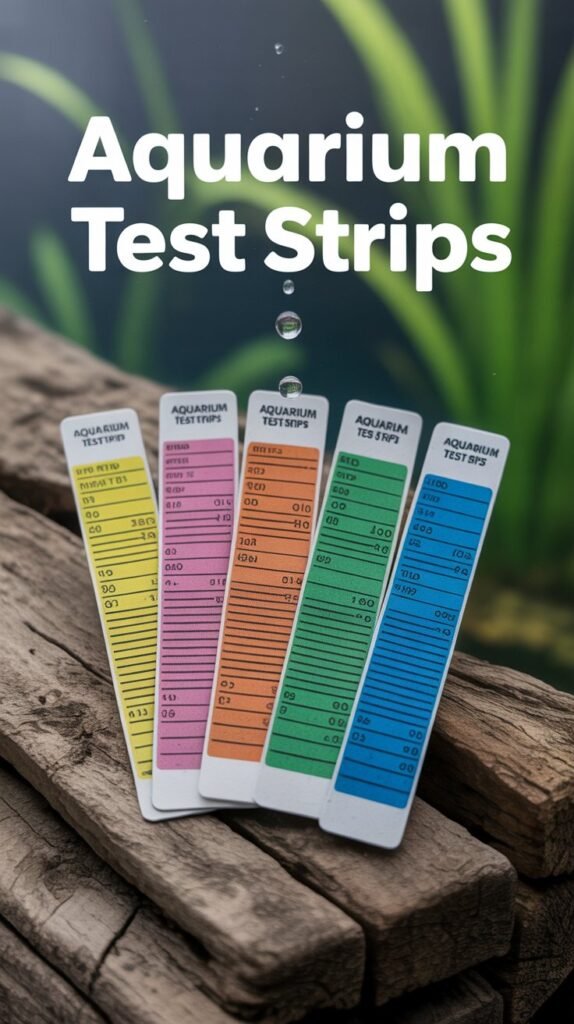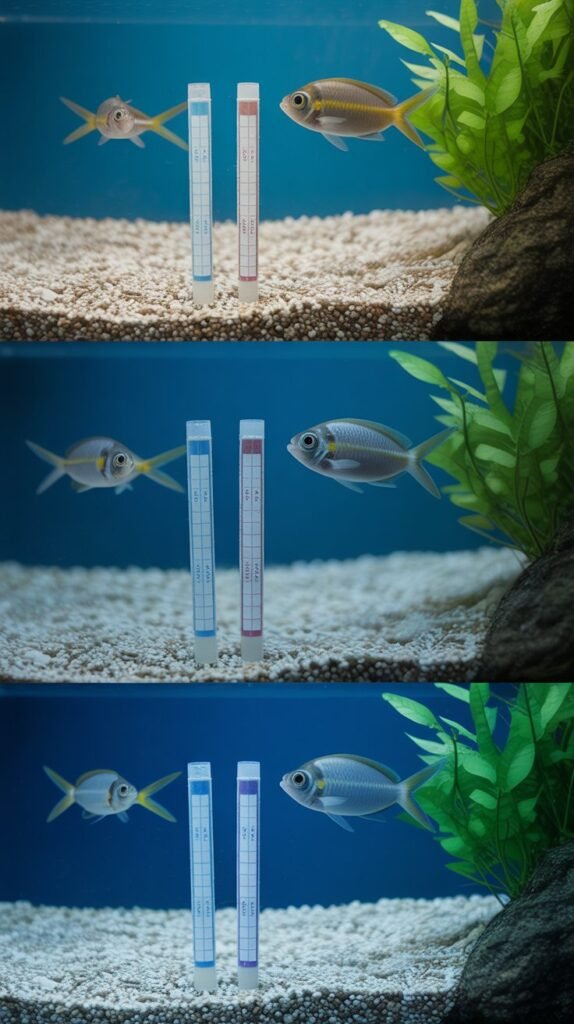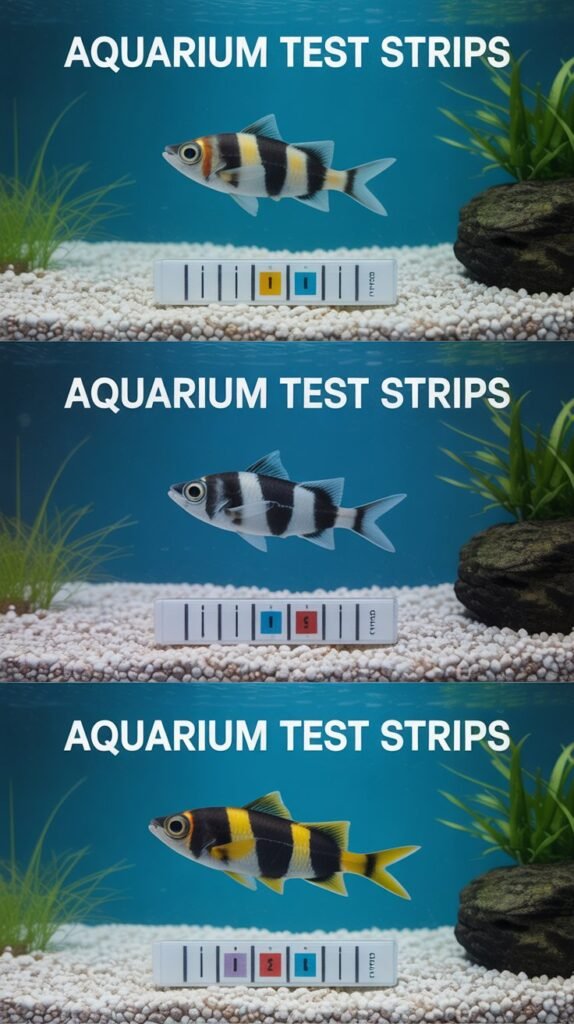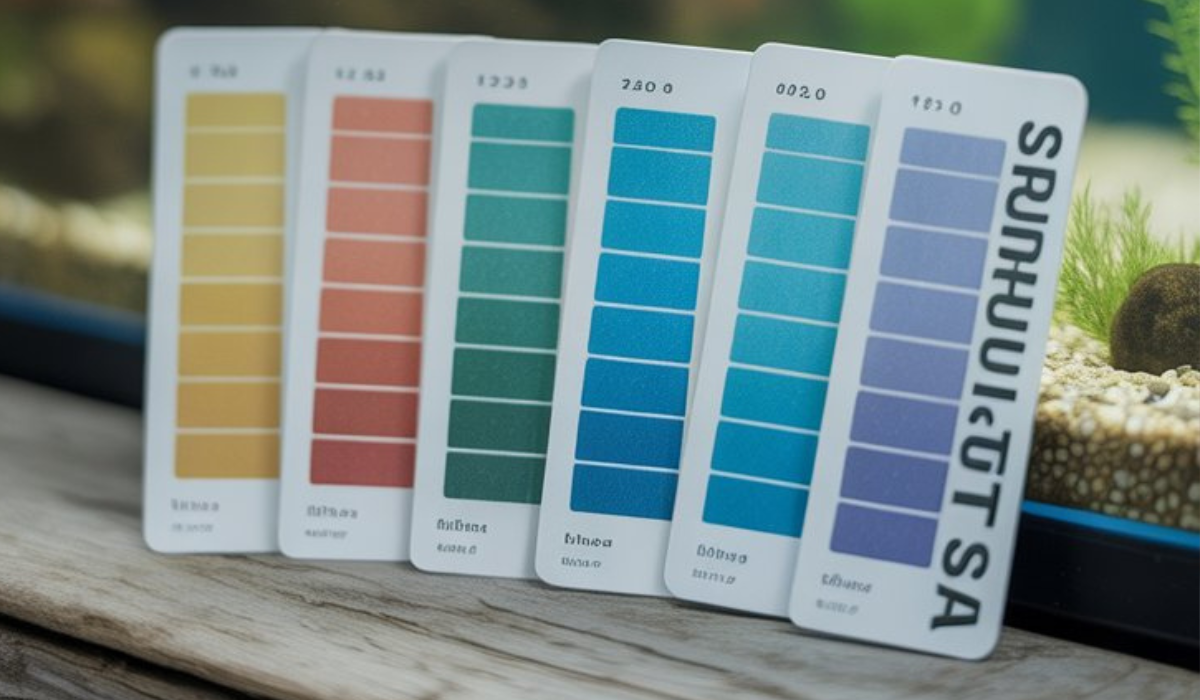Maintaining the perfect water quality is one of the most crucial aspects of aquarium care. Whether you have a freshwater or saltwater setup, your fish’s health depends on consistent monitoring of key water parameters. Among the many testing tools available, aquarium test strips have gained immense popularity for their convenience, speed, and affordability.
This comprehensive guide will explore everything you need to know about aquarium test strips — how they work, what parameters they measure, how to use them properly, their pros and cons, and expert tips for getting the most accurate results.
What Are Aquarium Test Strips?
Aquarium test strips are small, disposable plastic strips with chemical reagent pads attached. When dipped into aquarium water, these pads change color based on the concentration of specific chemicals or compounds in the water. The resulting color is then compared to a chart provided by the manufacturer to interpret the test results.
They provide a quick and easy way to monitor essential water parameters such as:
- pH level
- Ammonia (NH3/NH4+)
- Nitrite (NO2−)
- Nitrate (NO3−)
- Carbonate hardness (KH)
- General hardness (GH)
- Chlorine (in tap water)
While they may not be as precise as liquid reagent test kits, they are incredibly useful for routine water quality checks and early detection of potential problems.
Why Water Testing Is Essential in Aquariums

Water may look clean to the naked eye, but it can contain invisible toxins that harm fish, plants, and beneficial bacteria. Testing the water regularly helps ensure a healthy, balanced ecosystem.
Here’s why aquarium testing is vital:
- Prevents Fish Stress and Death
Poor water quality is the number one cause of fish illness and mortality. High ammonia or nitrite levels can burn fish gills, while low pH can cause stress and weaken immune systems. - Ensures a Stable Nitrogen Cycle
The nitrogen cycle converts toxic ammonia into nitrite and then into nitrate. Monitoring these parameters ensures that the cycle remains stable and functioning properly. - Optimizes Plant Growth
For planted aquariums, maintaining the right balance of nutrients and pH is critical for vibrant plant growth. - Detects Problems Early
Regular testing allows you to catch imbalances before they become serious — saving time, money, and your fish. - Guides Water Changes and Treatments
Accurate testing helps you decide when to perform water changes, adjust chemical balance, or add conditioners and supplements.
Types of Aquarium Test Strips
There are several types of aquarium test strips available, each designed for specific testing needs:
1. Freshwater Test Strips
These strips measure key parameters like pH, hardness, nitrite, nitrate, and sometimes ammonia. They are designed for freshwater tanks and are essential for tropical, community, or goldfish aquariums.
2. Saltwater Test Strips
Saltwater strips test for salinity (specific gravity), pH, nitrite, nitrate, and alkalinity. Some advanced ones even test for calcium and magnesium, vital for reef tanks.
3. Ammonia Test Strips
Dedicated ammonia test strips focus solely on ammonia detection, providing quick results for identifying toxic spikes that can harm fish.
4. Multi-Parameter Test Strips
These are all-in-one strips that test several parameters simultaneously. They are convenient for general water monitoring and are often used for weekly testing routines.
How Aquarium Test Strips Work
Aquarium test strips rely on colorimetric chemical reactions. Each pad on the strip contains specific chemicals that react with substances in the water.
Here’s a simplified process:
- Dip the Strip: Submerge the strip into aquarium water for a few seconds.
- Remove and Wait: Take the strip out and hold it horizontally. Wait for the recommended reaction time (usually 30–60 seconds).
- Read Results: Compare each pad’s color to the color chart provided with the test kit.
Different brands may have unique instructions, so always follow the manufacturer’s guidelines.
Step-by-Step Guide: How to Use Aquarium Test Strips

To ensure the most accurate results, follow these steps carefully:
- Wash Your Hands: Avoid contaminating the strip with soap, lotion, or chemicals.
- Collect Water Sample: Use a clean container to take water from your aquarium (ideally mid-level).
- Dip the Strip: Immerse the strip completely but briefly (2–3 seconds).
- Remove and Hold Flat: Don’t shake or flick the strip; keep it horizontal to prevent colors from bleeding.
- Wait for Reaction: Let the pads change color according to the instructions.
- Compare Colors: Match each pad to the chart as quickly as possible for accuracy.
- Record Results: Keep a log of your readings to track trends in water quality over time.
Interpreting Aquarium Test Strip Results
Different parameters have specific ideal ranges depending on whether your aquarium is freshwater or saltwater.
For Freshwater Aquariums:
- pH: 6.5 – 7.5
- Ammonia: 0 ppm
- Nitrite: 0 ppm
- Nitrate: < 40 ppm
- KH (Carbonate Hardness): 4 – 8 dKH
- GH (General Hardness): 4 – 12 dGH
For Saltwater Aquariums:
- pH: 8.0 – 8.4
- Ammonia: 0 ppm
- Nitrite: 0 ppm
- Nitrate: < 20 ppm
- Alkalinity: 8 – 12 dKH
- Calcium: 400 – 450 ppm
If any parameter falls outside these ranges, immediate corrective actions such as partial water changes, filtration improvements, or chemical treatments may be necessary.
Advantages of Using Aquarium Test Strips
- Quick Results – Test strips provide results in less than a minute.
- Ease of Use – No mixing chemicals or using droppers.
- Affordable – Cost-effective for regular monitoring.
- Portable – Easy to carry and use anywhere.
- Multi-Parameter Testing – Some strips measure up to 7–8 parameters at once.
Limitations of Aquarium Test Strips
While convenient, test strips also have some drawbacks:
- Less Accurate than Liquid Kits: Readings can vary slightly due to human interpretation of colors.
- Short Shelf Life: Moisture or air exposure can degrade reagent pads.
- Limited Range: May not test for all parameters, such as phosphate or copper.
- Color Interpretation Issues: Lighting conditions and subjective perception can affect reading accuracy.
To counter these limitations, use test strips for routine checks and confirm results with liquid reagent kits if something seems off.
Tips for Getting Accurate Readings
- Store Strips Properly: Keep them in a cool, dry place with the lid tightly sealed.
- Avoid Wet Hands: Water can activate pads prematurely.
- Use Fresh Strips: Expired strips can produce false readings.
- Test at the Same Time: Consistency ensures reliable trend tracking.
- Record and Compare: Maintain a log to spot fluctuations and patterns.
- Cross-Check Critical Results: Confirm with liquid kits if you get unusual readings.
Top Recommended Aquarium Test Strip Brands

Here are some of the most trusted brands used by aquarists worldwide:
- Tetra EasyStrips 6-in-1 – Popular for freshwater aquariums; measures pH, KH, GH, nitrite, nitrate, and chlorine.
- API 5-in-1 Test Strips – Provides quick and fairly accurate readings for key parameters.
- JBL ProScan Water Analysis by App – Offers digital readings via smartphone scanning.
- Aqua Care Pro Test Strips – Includes ammonia detection, making it ideal for beginner aquarists.
- Coop Aquatics Multi-Test Strips – Reliable and easy to interpret with color accuracy.
Comparing Test Strips vs. Liquid Test Kits
| Feature | Test Strips | Liquid Test Kits |
|---|---|---|
| Ease of Use | Very easy | Moderate |
| Accuracy | Moderate | High |
| Time Required | < 1 minute | 5–10 minutes |
| Cost | Affordable | Slightly expensive |
| Shelf Life | Shorter | Longer |
| Parameters Tested | Basic | Comprehensive |
For everyday monitoring, test strips are perfect. For troubleshooting or detailed analysis, liquid kits are better.
Common Mistakes When Using Aquarium Test Strips
- Dipping Too Long: This can oversaturate pads and alter results.
- Reading Too Late: Delayed readings can make colors darken or fade.
- Touching Pads: Oils from fingers can contaminate chemicals.
- Mixing Fresh and Saltwater Strips: Always use strips designed for your specific aquarium type.
- Ignoring Expiry Dates: Expired strips give unreliable results.
Maintaining Ideal Aquarium Water Parameters
Using test strips is only half the process — maintaining stability is the ultimate goal. Here’s how to keep your water parameters balanced:
- Perform regular water changes (20–30% weekly).
- Avoid overfeeding — excess food increases ammonia.
- Maintain proper filtration and clean filters regularly.
- Add live plants to absorb nitrates.
- Use dechlorinators for tap water.
- Quarantine new fish to prevent contamination.
Aquarium Test Strips for Beginners
For beginners, aquarium test strips are a lifesaver. They eliminate the complexity of liquid testing and provide instant feedback. Start by testing your tank twice a week and record results. Over time, as your tank stabilizes, weekly testing is sufficient.
Advanced Tip: Using Digital Readers with Test Strips
Some modern test strip brands now integrate with smartphone apps. Simply scan your strip, and the app reads and records precise values. This eliminates color interpretation errors and tracks trends automatically — an excellent feature for tech-savvy aquarists.
Environmental Impact and Disposal
Aquarium test strips are non-toxic, but they should not be flushed into the tank or down the drain. Dispose of them in regular household waste after use. Store them responsibly to avoid moisture contamination or environmental exposure.
Conclusion
Aquarium test strips are a vital tool for every aquarist — from beginners to experts. They provide a quick, easy, and affordable way to monitor your tank’s water quality and ensure your fish thrive in a healthy environment.
While they might not replace liquid kits for precise scientific measurements, their convenience and reliability make them indispensable for routine testing. With consistent use, accurate interpretation, and proper aquarium maintenance, you’ll create a stable ecosystem where your aquatic life flourishes.
FAQs About Aquarium Test Strips
1. Are aquarium test strips accurate?
Yes, test strips are accurate enough for general monitoring, though not as precise as liquid reagent kits. Always store them properly and follow usage instructions for best results.
2. How often should I test my aquarium water?
For new tanks, test 2–3 times per week. Once the aquarium stabilizes, weekly testing is usually sufficient.
3. Can I reuse aquarium test strips?
No, test strips are single-use only. Each strip’s chemicals react once and cannot be reused.
4. Do aquarium test strips work in saltwater tanks?
Yes, but only use strips labeled for saltwater or reef aquariums. Freshwater strips may give inaccurate readings in saltwater environments.
5. Why do my test strip results look different under different lights?
Lighting can affect color perception. For best accuracy, read results under natural or white light.
6. Can aquarium test strips detect chlorine in tap water?
Yes, many multi-parameter strips include a chlorine test pad to ensure your tap water is safe before adding it to the tank.
7. What is the shelf life of aquarium test strips?
Typically 1–2 years. Always check the expiration date and store in a cool, dry place.
8. Should I still use a liquid test kit if I have test strips?
It’s a good idea to confirm unusual or critical readings with a liquid kit, especially before adding new fish or performing major changes.

